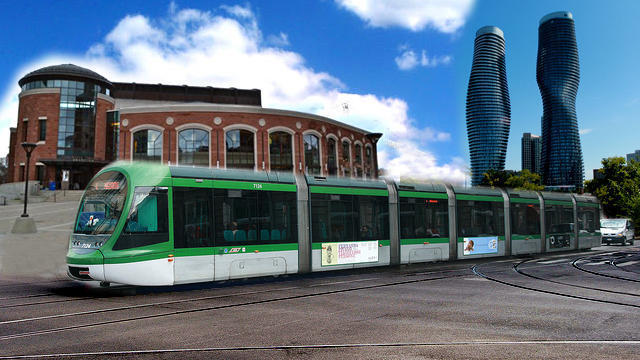$2.8 billion LRT tunnel could finally get greenlight in Brampton, Mayor calls for more transit funding per resident
Published January 17, 2024 at 12:38 pm

The city wants to move ahead with an underground Light Rail Transit expansion and wants to see the provincial and federal governments increase funding to the city as ridership is on the rise.
A committee of Brampton City Council heard an update on Wednesday on two options to extend LRT service from Steeles Avenue to the Brampton GO station – an above-ground option, or a hybrid surface and tunnel route.
And while the cost of the tunnel has ballooned to more than twice the cost of the above-ground option, the city says the tunnel is the best way forward as Brampton could get a larger share of funding dollars from the province and Ottawa based on ridership.
Last year council heard that the above-ground route would cost around $933 million, while the hybrid tunnel and surface street plan has jumped from $1.7 billion to at least $2.8 billion last year.
With a population of more than 656,000, the city says Brampton only receives $5,030 per capita for transit project funding – a number Mayor Patrick Brown said is too low when looking at other cities like Toronto ($14,240) or Hamilton ($5,970).
Transit ridership in Brampton saw a huge increase of 160 per cent between 2009 and 2019, and the city says there has been a 30 per cent rider recovery since the impacts of the COVID-19 pandemic, according to a new report.
With ridership in other comparable municipalities dropping since 2019, the city is calling on Ottawa and Queens Park to come through with funding through the new federal Permanent Transit Fund and the province’s Ontario Infrastructure Bank.
And with a growing population and more housing projects underway in Brampton, councillors said building up the city’s transit infrastructure is needed to support community growth.
“Let’s not settle for a transit proposal for phase 2 that we don’t believe is good enough for our city,” Brown said on Wednesday.
“Other cities have demanded what they felt was in the best interest for their city, and I feel very strongly that this is what we deserve as a city,” adding that the city’s ridership numbers “make this decision a no-brainer.”
The report to the committee will go to Brampton City Council next week for official approval.
City staff say that while the tunnel option is more expensive it would also reduce traffic impacts and save riders time, travelling from Steeles Avenue to Downtown Brampton in about seven minutes.
If the city does break ground on the hybrid option it would include four stops and a 2 km tunnel from Nanwood Drive to just south of the Brampton GO station. Two of the stations would be above ground while two would be in the tunnel.
Jaipaul Massey-Singh, CEO of the Brampton Board of Trade, was in council chambers on Wednesday to voice support for the LRT project, saying the board is in favour of whichever option will be completed with “responsibility and speed.”
The original transit assessment project process was approved back in September 2014 and the design included a surface alignment along Main St. into downtown Brampton. Funding from the Province was announced in 2015, and Council greenlit construction up to Steeles Ave. in October of that same year.
A survey of residents by the city found that 54 per cent of those polled preferred the tunnel option.
INsauga's Editorial Standards and Policies


